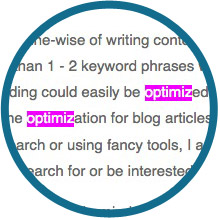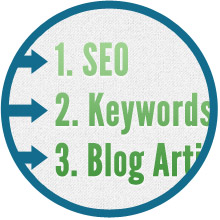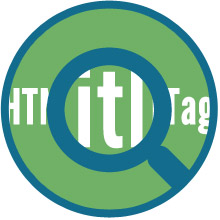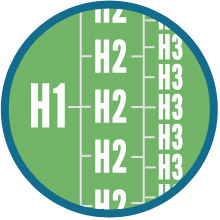The idea that content is king and that every company that has a website (if you don’t, call us immediately;) should adopt and implement an online content strategy is nothing new. At last check, doing a Google search for “content strategy” returned some 97+ million page results. In other words, lots (and lots) has been said and will be written of the importance of content strategy and how it relates to organic search results (the free listings at any given search engine).
Probably the most common area of any given website, where content can be consistently added and evolve, is your company’s news, releases or blog. Not only does contributing, on a regular basis, to your company’s blog add valuable content for both site visitors and search engines alike – but this content should also stand to further position you and your brand as experts in your field.
Without going deeper into why you should adopt a content strategy for you online presence, this article is specifically about how to tweak or optimize your blog/news to have a better chance of attracting visitors through organic search results – in other words perform SEO or Search Engine Optimization on the articles you author.
On-Page SEO is NOT Rocket Science
 Contrary to popular belief and what a lot of SEO’s would have you believe, performing some basic on-page optimization for the new pages in your website (ie: blog articles etc) is neither rocket science nor voodoo (although that has a nice ring to it)!
Contrary to popular belief and what a lot of SEO’s would have you believe, performing some basic on-page optimization for the new pages in your website (ie: blog articles etc) is neither rocket science nor voodoo (although that has a nice ring to it)!
When writing a typical blog article there are truly only about 5 basic elements that really need a little bit of special attention. These are just a few html elements (I promise, you won’t have to be an html guru for this) that are critical to tailor to get the most SEO juice from your content. The elements we’ll discuss are as follows: The html page title, the meta description tag, the url/link naming convention, the content itself and html heading tags. We could sprinkle a few more in for good measure: the image “alt” attribute and meta information pertaining to authoring but the first 5 are the most important.
The good news is, if your website is built on a current content management system such as Drupal, WordPress or Joomla – chances are you won’t have to touch a line of code to implement what follows. Of course if your site is not built on a CMS, it’s time to upgrade.
The Keywords & the Main Content of Your Articles
 To maximize the benefits, search engine-wise of writing content, for each article you post you should consider targeting no more than 1 – 2 keyword phrases within the body of your article. For instance, the article you’re reading could easily be optimized for the keyword phrases “SEO for blog articles” and “search engine optimization for blog articles”. Truly that’s what this post is about and without doing much research or using fancy tools, I anticipate that enough people who know how to write blogs might search for or be interested in this type of article.
To maximize the benefits, search engine-wise of writing content, for each article you post you should consider targeting no more than 1 – 2 keyword phrases within the body of your article. For instance, the article you’re reading could easily be optimized for the keyword phrases “SEO for blog articles” and “search engine optimization for blog articles”. Truly that’s what this post is about and without doing much research or using fancy tools, I anticipate that enough people who know how to write blogs might search for or be interested in this type of article.
Once you have a couple of keyword phrases in-mind, make sure to sprinkle those phrases into your written content. We’re not writing for robots here, so let’s not go overboard though. A few (3-4) will do it for an article of this length. Just make sure to include those phrases in your article content so search engines have a clear idea what your content is about.
Now of course, dropping a few keyword phrases into your content isn’t enough to sway a search engine as complicated as Google is, we have to help out a bit more than this, so let’s start from the top.
Include Keyword Phrases in Your Article’s URL
 Depending on your content management system, you may or may not have access to creating custom urls (link locations) for your individual articles. If not, you should speak with your webmaster about gaining this ability. Proper optimization of any web page will include tailoring of the page’s url to include your main keyword phrase, separated by hyphens.
Depending on your content management system, you may or may not have access to creating custom urls (link locations) for your individual articles. If not, you should speak with your webmaster about gaining this ability. Proper optimization of any web page will include tailoring of the page’s url to include your main keyword phrase, separated by hyphens.
A clean example would be the url for this article/page:
http://www.flitehaus.com/blog/2013-02-08-seo-blog-articles
Notice the inclusion of the main keyword phrase to the url – “SEO for blog articles”. Very simple and doesn’t count a ton for ranking weight but every little bit helps.
HTML Page Title for Blog Articles
 The html page title (<title>SEO (Search Engine Optimization) for Blog Articles</title>), which appears in the <head> section of your pages’ html is arguably the single most important element that you MUST tailor. The page title should be written to entice users, give them a clear understanding of the pages’ intent and most importantly contain at least one of your chosen keyword phrases for the page.
The html page title (<title>SEO (Search Engine Optimization) for Blog Articles</title>), which appears in the <head> section of your pages’ html is arguably the single most important element that you MUST tailor. The page title should be written to entice users, give them a clear understanding of the pages’ intent and most importantly contain at least one of your chosen keyword phrases for the page.
Remember though, you’re writing this for humans, not robots, so don’t make your page titles long listings of keyword phrases. Indeed, the ideal length of the page title element is about 70 characters (including spaces).
Most content management systems again, should give you access to tailor page titles on each page in your site without digging into any code. In addition, most CMS’ will give you the option to have your html title match the headline on the page (not to be confused with each other).
For more information on the html page title element, visit SEOMoz.org.
HTML Heading Tags to Organize Your Content
 Similar the headings in an outline, html heading tags (h1, h2, h3 and son on) help to visually break up your page’s content, but also serve to tell search engines about the structure and hierarchy of the content on any given page. Every article you write should include at least a heading 1 tag, which is the main idea of your article and sub-sections under this main idea (denoted by heading 2s). Any further breakdown of content would fall under h3, h4 and so forth.
Similar the headings in an outline, html heading tags (h1, h2, h3 and son on) help to visually break up your page’s content, but also serve to tell search engines about the structure and hierarchy of the content on any given page. Every article you write should include at least a heading 1 tag, which is the main idea of your article and sub-sections under this main idea (denoted by heading 2s). Any further breakdown of content would fall under h3, h4 and so forth.
As an example this article consists of a single heading 1 (there should ONLY be one h1 tag per page) and several heading 2 tags for the subsections.
Not only does breaking up your content in this way assist search engines in understanding what your pages are about, but it gives readers an easy way to scan your content (as many do) rather than read word for word. When the visitor finds what they are looking for, of course they slow down and dig deeper.
For SEO purposes, it is important to include your page’s keywords in the h1 and h2 tags and be sure the headings are nice and descriptive about the content that follows. Again, this helps search engines understand what a page is about, but also provides readers with visual clues that the content they found relates to the Google search they performed.
Again, your content management system of choice should give you easy access to setting html heading tags through it’s WYSIWYG editor and if not – it’s time to pick up the phone.
META Description for Your Blog Article
 Back in the day (way back) META tags were actually used by search engines as a portion of how they ranked your pages in the organic listings. This in NOT the case today, in fact they aren’t used for ranking at all and indeed we no longer even include the META keyword tag in our sites. That being said, the META description tags still plays an integral role in the search results.
Back in the day (way back) META tags were actually used by search engines as a portion of how they ranked your pages in the organic listings. This in NOT the case today, in fact they aren’t used for ranking at all and indeed we no longer even include the META keyword tag in our sites. That being said, the META description tags still plays an integral role in the search results.
When a user does any given search at Google and other major engines, the results that are served up typically include 10 listings per page and the each listing is made up of a page’s html title tag and META description tag. So while ranking isn’t the concern here, what users see and ultimately decide to click on is what we’re talking about.
A nicely crafted META description tells a searcher exactly what your content is about and why they’d choose your website over the others in the results. Of course visually seeing the keywords they searched for in your description increases the odds of them choosing your site, so be sure to include those keyword phrases in your META description.
Another reason why it’s so important to craft a unique META description for each page you author is that if you leave this blank, Google will typically “grab” the first 150-160 characters of text from your page and display this as your description. Of course, this may or may not paint your page in the best light. Better to take matters into your own hands and tell Google what to display.
To learn more about the META description tag, visit SEOMoz.org.
A Word About Images and the ALT Attribute for Your Blogs
If all of your blog articles consisted only of text, they wouldn’t create a very rich user experience and indeed images not only help to illustrate your ideas but serve to break the page up for users and make your content more digestible. Every blog article you write should include images for other reasons as well, including supporting the sharing of your content on social media channels such as Facebook and Pinterest.
When adding images to your blog post, be sure to complete both the ALT Attribute and image title for each image you add. This not only assists search engines with adding your pictures to image results but also carries a tiny bit of weight to the rankings if keywords are included.
Another benefit is that adding the ALT attribute and image title tag assists folks either surfing the web with images turned off in their browsers (rare) or if they are dependent on screen readers for the visually impaired.
So Start Optimizing Those Blogs
So there you have it, enough information to do a pretty fair job of optimizing your blog articles for search engines. Now get out there and start creating that content and when your finished with your next masterpiece, don’t forget to share it – Tweet it, Pin it, Post it to Facebook and LinkedIn – Spread the word!
Love to hear your take on this article! Have something to add? Need further assistance with SEO? Drop us a line!